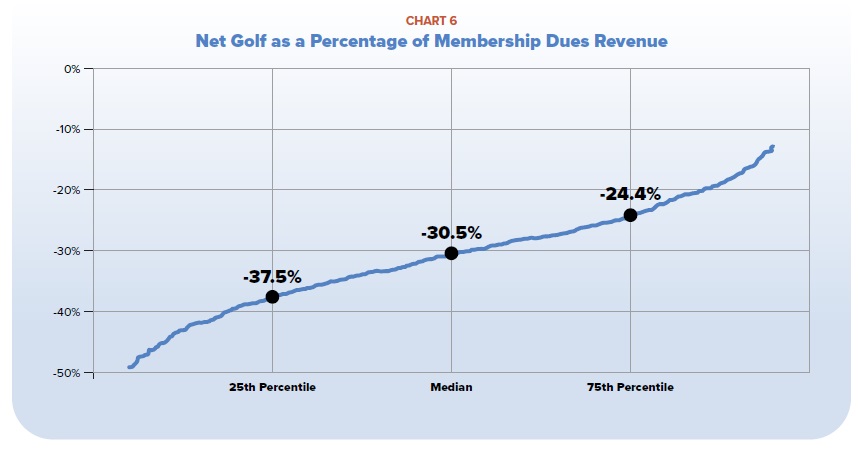Of all the various services and amenities that go into providing the member experience in a private club, food and beverage is the most important. It is used most frequently, is the most important amenity across all members and, as Charts 1-4 show, is nearly as important as golf—and more important than swimming, fitness and racquet sports—in motivating members to join and use the club and in determining their level of satisfaction.
According to the industry data presented here, golf and F&B are cornerstones of a club’s overall amenity mix in the eyes of the members. So why are they treated so differently in budget discussions?
Food and beverage profitability, or lack thereof, is one of the most intractable debates in private club boardrooms. Heated discussions about why a club is “losing money” in F&B happen every day in clubs across the country. Discussions about golf are also common, but they tend to focus on quality, conditioning and opportunities to invest. You’ve probably never heard anyone ask why the club is “losing money” in golf, but the reality is that golf is more highly subsidized than F&B.


Charts 5 and 6 show the proportion of dues revenue applied to subsidize F&B and golf. As can be seen, golf actually “loses” considerably more money than F&B, requiring a much larger subsidy of dues. Another important piece of context is that while roughly 80% of clubs subsidize F&B, 100% of clubs with golf subsidize golf.


A 2020 Club Benchmarking white paper, “A Data-Driven Perspective on Food and Beverage in Private Clubs,” suggests the issue is perspective. We are all familiar with dining. We all eat out and based on those experiences, we tend to apply an unequal paradigm (commercial restaurants) to the club’s F&B operation. As a result, support around the choice to spend money on golf is embraced, but the opportunity for positive choices around F&B is often missed.
The private club business model is built around dues as the revenue stream that funds the member experience. In theory, members pay dues to belong to a club, and in return, the club uses those dollars to provide services and amenities at a level defined by the club’s culture and member expectations. If dues revenue is weak, the member experience suffers, and it becomes increasingly difficult to interest new members in joining the club. In a typical 501(c)(7) not-for-profit club, the annual operating budget is set to break even, meaning its purpose is to fund the member experience and not to produce a profit.
If F&B is such an important part of the member experience—which is what the data shows—the F&B debate should give way to productive conversations about member satisfaction, member engagement and member enjoyment of a tremendous food-and-beverage program. Just as the greens committee focuses on constantly improving the course and course conditions, the same discussion should occur in the house committee. The focus should be on constantly improving the F&B amenity so that it is a magnet for members joining the club, and for members using the club.


